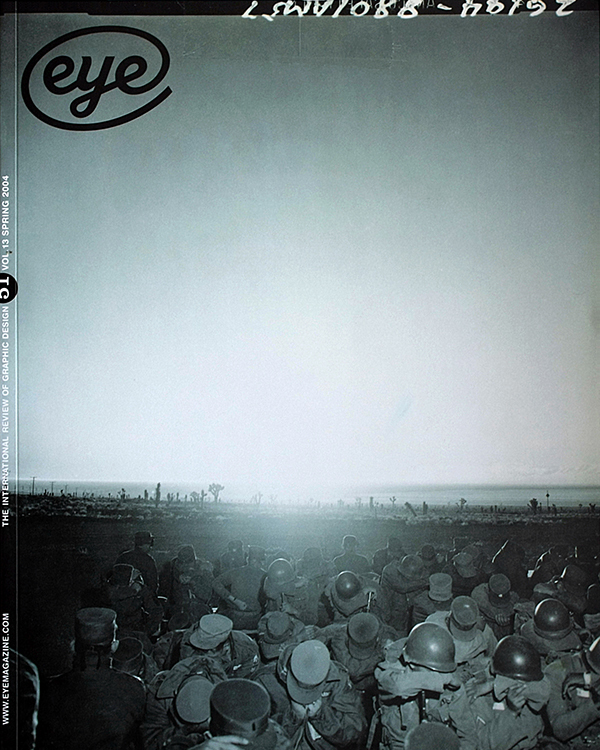Spring 2004
A lifetime of brush-script problem-solving
Advertising And The Artist
The work and collection of Ashley Havinden. Catalogue published by National Galleries of Scotland, £14.95. Exhibition: The Dean Gallery Edinburgh, 15 Oct 2003-18 Jan 2004. Reviewed by Steve RigleyThere is a photograph of Ashley Havinden (1903-73), taken for Country Life sometime late in his career, showing him well turned out in a three-piece suit, handkerchief in top pocket and with an immaculately groomed moustache. Perhaps the Major from Fawlty Towers? Or a designer of magnificent flying machines? Anyway, it’s a traditionally British image, and therefore difficult to reconcile with the man as a champion of Modernism in British advertising.
This sizeable collection marks both the centenary of Havinden’s birth and 30 years since the loan of part of his estate to the Scottish Gallery of Modern Art. The show features all Havinden’s best advertising work from his long and distinguished career with W. S. Crawford Ltd – a lifetime of resolving the problems of Pretty Polly, KLM, Simpson, the Milk Marketing Board and Chrysler Cars, among others.
There are also commissioned designs for rugs and textiles for the celebrated Edinburgh Weavers under Alistair Morton, and a number of Havinden’s own paintings, of which the curators note ‘a quintessentially English presentation of Modernism, combining rigid geometric planes and lines with biomorphic motifs’. These sit comfortably alongside the collected work of his friends: Nicholson, Hepworth, Calder, Moore and Scott
His story is inspiring. Without formal training, he began his career with Crawfords as a £1 per week trainee and moved on to become art director in 1929. He stayed with the company until 1967, eventually becoming vice-chairman, then retired to concentrate on his painting. During the Second World War, Havinden served as a camouflage officer – so who said that design isn’t a matter of life and death?
Sadly there is little evidence in this exhibition of Havinden’s spell in Berlin in 1928, directing the European campaign for Chrysler Cars. This leaves the visitor to speculate exactly how and when Havinden came under the influence of Modernism, and what the term might have meant to him.
The young Havinden found himself in an innovative company at a particularly exciting time. In 1931, the Futurist Fortunato Depero claimed ‘the art of the future will inevitably be advertising art’. Such optimism is reflected in the energy of Havinden’s early work, particularly in the dynamic streamlined campaign for Chrysler in the late 1920s and an exquisite photomontage campaign for Dewar’s Whisky from the same period. These campaigns, along with a 1929 campaign for the Western Electric Sound System, suggest the strong influence of Tschichold and McKnight Kauffer.
However, within a few years the conviction of Havinden’s early work is tempered with a more British caution. The celebrated campaigns for the Milk Marketing Board, Eno’s and Wolsey are characterised by a retreat from formal innovation towards a combination of Havinden’s signature brush script and cheery caricature. Advertising and packaging for Mochonochie’s soup are somewhat prosaic by comparison, confirming a broader typographic palette and the influence of Stanley Morison. Yet in each of these campaigns there remains a nagging suspicion that Havinden’s characters smile down in the absence of what we would now call ‘real ideas’. By comparison, his later campaigns for Pretty Polly, Yardley and DAKS are more engaging and confident, finding a stronger resolution of the formal and conceptual.
Havinden was clearly a talented and forward-thinking designer, sharp enough to see the relevance of painting to his work as an art director, and sufficiently brave and energetic to break through any notional boundaries of his profession. Yet there are missing elements: the economy or wit of Paul Rand; the technical virtuosity of Abram Games; and the radical and truly modern exploration of his European contemporaries.
It would be remiss to separate the man from those who supported him and helped him on his way. Who else could boast of typographic advice from Stanley Morison, drawing lessons from Henry Moore, the studio ‘assistance’ of Edward McKnight Kauffer and Tom Eckersley, or the friendship of Ben Nicholson and Barbara Hepworth, who introduced him to Walter Gropius, László Moholy-Nagy and Herbert Bayer? Havinden had a good ‘team’: his wife and account handler Margaret, and copywriter ‘Bingy’ Mills.
Perhaps the greatest credit should go to Mr Crawford himself who, seeing the potential in the lad, steered him in the direction of like-minded artists, and gave him the company base from which to build such a strong profile.
Steve Rigley, designer, educator, Glasgow
First published in Eye no. 51 vol. 13
Eye is the world’s most beautiful and collectable graphic design journal, published for professional designers, students and anyone interested in critical, informed writing about graphic design and visual culture. It is available from all good design bookshops and online at the Eye shop, where you can buy subscriptions and single issues.

